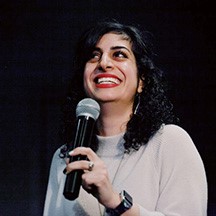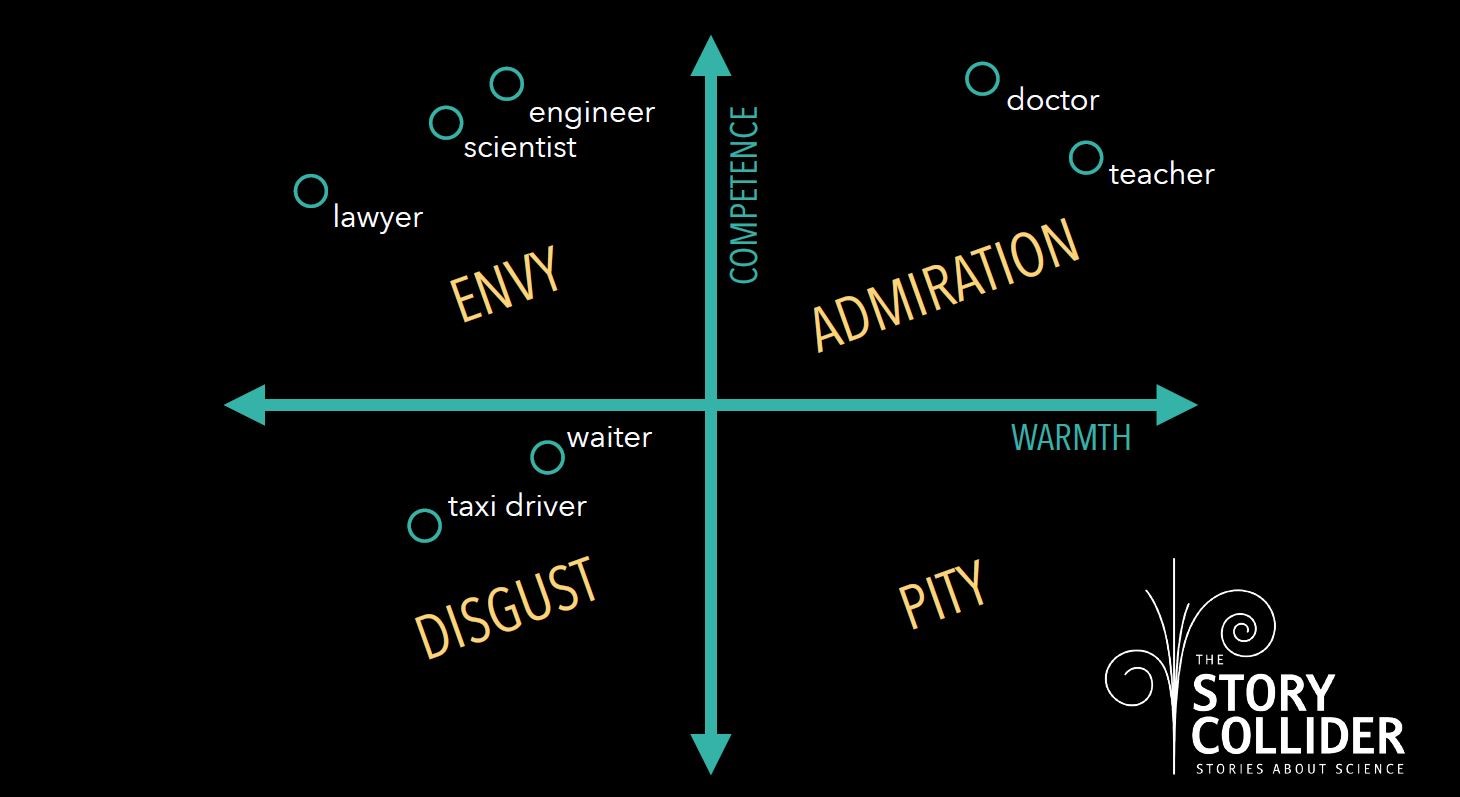MODERATOR:
Dana Compton
American Society of Civil Engineers
Reston, Virginia
SPEAKER:
Maryam Zaringhalam
National Library of Medicine
Washington, DC
REPORTER:
Madeleine Sendek
American Academy of Neurology
Minneapolis, Minnesota

Within Scientific Discovery, There’s a Story to be Told: Pathways to Open Science and Public Engagement
Stories focus on relatable characters and relatable events and can change cultural perceptions. Storytelling in science enables the public to engage with science and to understand that scientists are part of the public, too. Dr Maryam Zaringhalam, the Data Science and Open Science Officer at the National Library of Medicine’s Office of Strategic Initiatives and a senior producer for The Story Collider, presented “Storytelling for a More Equitable Open Science Enterprise” at the Council of Science Editors (CSE) 2020 Annual Meeting. Her presentation emphasized that storytelling in science can help gain public trust in science, help people see the motivations that drive the research, and help the public understand that science has failures. Dr Zaringhalam’s presentation focused on characterizing what successful open science looks like. She supported her research with examples of knowledge exchange strategies to increase public engagement within the scientific enterprise. Dr Zaringhalam cited storytelling and community science as powerful tools in opening the lines of communication between scientists and the general public.
Collaborative Science
Dr Zaringhalam believes the ultimate goal of open science is to make the research enterprise more cooperative and collaborative. Collaboration helps ensure the products of science discovery extend benefits to as many people as possible. Extending knowledge to as many people as possible requires gathering nonexpert perspectives and incorporating them into how researchers think, talk, and execute science.
Dr Zaringhalam sees the general public as partners in research, as opposed to participants, because science depends on their feedback, voice, perspectives, needs, and experiences. Engaging with the general public creates a pathway for a knowledge exchange feedback loop.
Knowing Your Audience
It is imperative to know your audience when trying to communicate science. Knowing your audience presents a challenge, especially in the United States because it is a diverse country. When data is collected broadly, the science includes diverse knowledge, and offers greater potential for far-reaching impact. When the benefits of science are vast, science becomes more powerful in its ability to help and support people. Breaking down barriers between the general public and scientists is mutually beneficial because the research becomes more valuable and practical when it is accessible to a greater number of people.
Dr Zaringhalam introduced the audience to the National Institute of Health’s All of Us Research Program.1 Launched in 2019, the goal of this program is to bring together 1 million participants to donate their information for research to help tailor health research to individuals.
When science includes the lay public as the All of Us Research Program does, it creates a framework of equity and inclusion. When the framework of science focuses on diversity, equity, and inclusion, it can reduce skepticism around science by building trust with a broad range of communities. Developing trust can create an inclusive culture by making the general public feel like they are a part of science, that science is for everyone, and that scientific researchers are striving to benefit as many people as possible.
Storytelling to Communicate Science
Storytelling is paramount in science communication because when people do not have the tacit knowledge from their personal experiences, they consult with people they trust in their social circles. When stories are delivered by the right messengers to the right communities, they can elicit understanding. Dr Zaringhalam described a study on perception and stereotype formation that was conducted to identify the qualities of competence and warmth.2 The presence of these qualities engendered people’s trust, credibility, and the belief that experts would act in their best interests. Gaining admiration requires warmth, and storytelling can create bonds that put scientists in the admiration quadrant.
Why Storytelling Can Effectively Communicate Science
The Story Collider,3 where Dr Zaringhalam works as a producer, defines a story as something that has a beginning, a middle, and an end, with something that changes in the middle. Using this structure of storytelling works when communicating science because science is continually changing the world’s story. When scientists share their stories at The Story Collider, they are the characters, and scientific discovery is the plot. By its very nature, scientific research is set up to tell a story—who investigated what, when, where, why, how, and why do we care?

Sharing science as a story humanizes scientists because it lets them share what they discovered and allows them to show how it contributes to society. Storytelling takes facts out of a vacuum and connects findings to the bigger picture. When Dr Zaringhalam advises scientists about how to tell their stories, she encourages them to say what drew them to conduct research and to be themselves. When scientists are telling their stories, they should be honest and share their hopes, fears, perspectives, and voice because vulnerability develops a pathway to make inroads with different communities.
Successfully Sharing Stories
Throughout her presentation, Dr Zaringhalam used audio bites of scientists telling their stories to demonstrate real-life successes that can be gained by using storytelling to communicate science.
Dr Ali Mattu,4 a psychologist and a science communicator, was drawn to his research in exposure therapy because of his own experience with anxiety.
Dr Megan Hatlen,5 a cancer researcher who now works at a biotech start-up, shared challenges she faced when completing her PhD and the obstacles she overcame to get to where she is today.
Dr Tracy Dickson-Salazar6 decided to become a neuroscientist when her daughter was diagnosed with an extremely rare form of epilepsy. Dr Salazar realized scientific research papers are not written in formats that are accessible to the public. “You really shouldn’t have to get a PhD to figure out what’s wrong with your kid and to do the research yourself to find the medicine behind the science and then convince the physicians to try that,” said Dr Dickson-Salazar.
St Louis pediatrician Dr Ken Haller7 shared his story about a young patient in the 1980s with a mysterious illness, which he later learned was an early case of HIV/AIDS. He shared what it was like to work on the front lines during the height of the HIV/AIDS epidemic, “I didn’t know then that this day would mark the split between before and after in my life and that I would be one of the survivors to tell the story,” said Dr Haller.
Every storyteller should aim to foster an inclusive environment. Dr Zaringhalam says she always considers the audience and the information she is trying to convey, and then determines what she is trying to communicate. Science communicators do not need to be experts, but they need to be invested in a particular area to lead people. Communicating science is a gateway into experiences that allow people to empathize with each other to cultivate a sense of understanding and belonging.
In addition to Dr Zaringhalam’s work with National Library of Medicine, she also serves on the leadership of 500 Women Scientists, working to make science open, inclusive, and accessible. Creating more open and equitable science is possible with storytelling. Storytelling helps ignite curiosity, provides a public window into what drives research, and can change facets of the relationship between science and society.
References and Links
- https://allofus.nih.gov/
- Fiske S. Stereotype content: warmth and competence endure. Cur Dir Psychol Sci. 2018;27:67–73. https://doi.org/1177/0963721417738825.
- https://www.storycollider.org/
- https://www.storycollider.org/stories/2017/1/6/exposure-erika-check-hayden-ali-mattu?rq=Mattu
- https://www.storycollider.org/stories/2017/10/27/pressure-stories-about-stressful-situations?rq=Hatlen
- https://www.storycollider.org/stories/2019/8/19/bonus-power-of-patients-stories-about-taking-back-the-narrative?rq=Salazar
- https://www.storycollider.org/board-bios/2019/1/24/ken-haller
